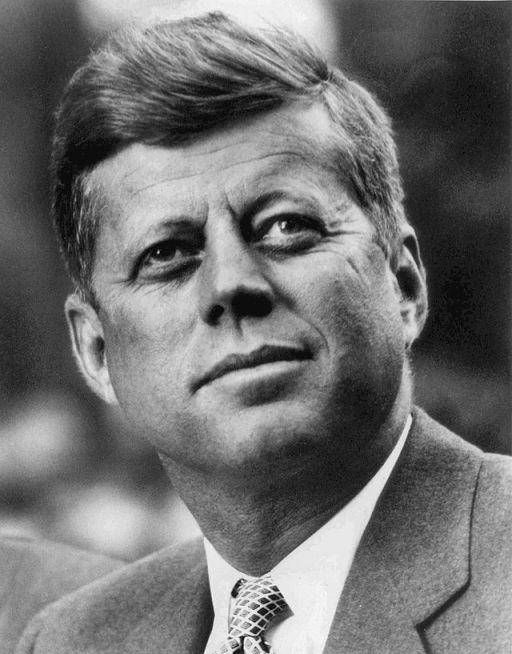'My fellow Americans, ask not what your country can do for you, ask what you can do for your country.'
'Let us not seek the Republican answer or the Democratic answer, but the right answer. Let us not seek to fix the blame for the past. Let us accept our own responsibility for the future.'
'Let every nation know, whether it wishes us well or ill, that we shall pay any price, bear any burden, meet any hardship, support any friend, oppose any foe to assure the survival and the success of liberty.'
'The cost of freedom is always high, but Americans have always paid it. And one path we shall never choose, and that is the path of surrender, or submission.'
'Those who make peaceful revolution impossible will make violent revolution inevitable.'
'If a free society cannot help the many who are poor, it cannot save the few who are rich.'
'Let us never negotiate out of fear. But let us never fear to negotiate.'
'Victory has a thousand fathers, but defeat is an orphan.'
On October 4, 1957, thanks to the work of German scientists and engineers recruited by Stalin from Hitler’s long-range rocket program, Russia put Sputnik I, a 184-pound satellite, into orbit round the earth, following it next month by a larger one weighing 1,120 pounds. The first American satellite did not go into orbit until January 31, 1958, and it weighed only 30 pounds. In fact America was ahead in miniaturization, which explained why it was content with low payloads. Eisenhower was not prepared to invest heavily in space. He took no notice of the post-Sputnik panic. With Kennedy the priorities changed totally. He put his V-P, Lyndon Johnson, in charge of the Space Program, with instructions to ‘get ahead of Russia.’
All the same, on April 12, 1961, less than three months after Kennedy had taken over, the Russians put their first man into orbit, beating America by four weeks. At a frenzied meeting Kennedy held two days later in the White House, stormed: ‘Is there any place where we can catch them? What can we do? Can we go around the moon before them? Can we put a man on the moon before them … can we leapfrog? … If somebody can just tell me how to catch up! Let’s find somebody, anybody. I don’t care if it’s the janitor there, if he knows how.’
'I believe that this nation should commit itself to achieving the goal, before this decade is out, of landing a man on the Moon and returning him back safely to the earth.' (Space Program, Joint Session of Congress
on May 25, 1961).
'That's one small step for man, one giant leap for mankind.' (July 20, 1969, Apollo 11 landed Neil Armstrong on the moon).
Kennedy was assassinated in Dallas, one of the richest and most enterprising cities in America, the capital of the Bible Belt, surrounded by one of the largest collections of religious universities and training colleges in the world.
Mass demonstration in black communities throughout the nation culminated on August 28, 1963 in a march of 250,000 protesters, led by King, to the steps of the Lincoln Memorial in Washington DC, where King delivered a memorable oration on the theme of ‘I have a dream that my four children will one day live in a nation where they will be judged not by the color of their skin but by … their character.’ This demonstration was part of the process which led to the passing of the Civil Rights Act (1964). The Act restored the federal government’s power to bar racial discrimination for the first time since the 19th century. Title II requires open access to gas stations, restaurants, lodging houses and all ‘public accommodations’ serving interstate commerce, and places of entertainment or exhibition. Title VI forbids discrimination in programs accepting federal funds. Title VII outlaws any employment discrimination.
In the postwar period US production of minerals was about four times larger than that of Russia, the second-largest producer. The symbol of these years was Pan-American Airways, the world-conquering airline which in June 1947 inaugurated the first round-the-world regular flight of 25,003 miles New York-New York, and eleven years later, in October 1958, brought in the first big-jet 707 regular service. In 1968 US, the world’s richest power, industrial production was more than a third (34 percent) of total world production.

